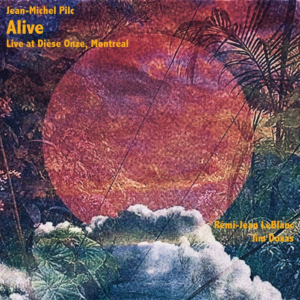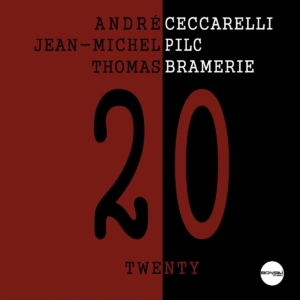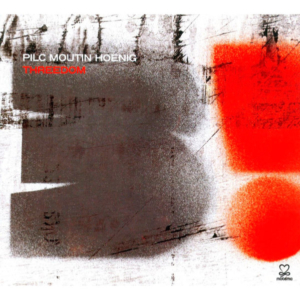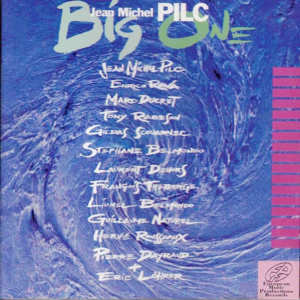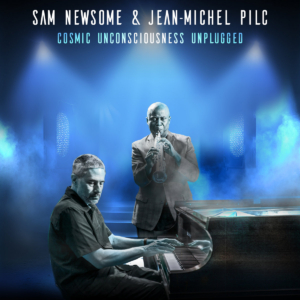 https://jeanmichelpilc.com/wp-content/uploads/2023/12/cosmic_unconcious_unplugged.jpg
1200
1200
LluchIE56
https://jeanmichelpilc.com/wp-content/uploads/2023/06/jean-michel-pilc_logo.png
LluchIE562023-12-03 13:38:552023-12-03 17:19:16Cosmic Unconsciousness Unplugged
https://jeanmichelpilc.com/wp-content/uploads/2023/12/cosmic_unconcious_unplugged.jpg
1200
1200
LluchIE56
https://jeanmichelpilc.com/wp-content/uploads/2023/06/jean-michel-pilc_logo.png
LluchIE562023-12-03 13:38:552023-12-03 17:19:16Cosmic Unconsciousness UnpluggedJean-Michel Pilc – solo piano
Released February 3, 2015
Label: Sunnyside Records
The language of jazz has many dialects. They can be regional, cultural or generational. One could argue that each musician must be responsible for his or her own dialect, if they are to be a truly distinct talent. An original statement, in this case a tune, presented by any individual musician can be interpreted in a multitude of ways. Paris-born, New York City based pianist Jean-Michel Pilc explores this concept in depth on his new solo release, What Is This Thing Called? Under the most optimal conditions, Pilc recorded what amounts to unique themes and variations based on the much-revered Cole Porter chestnut, “What Is This Thing Called Love?” Instead of creating a tedious exercise in rehashing similar idea after similar idea, the recording presents a tremendous portrait of the vast musical language Pilc has developed over his three decades as a professional jazz musician. Pilc has established himself as a respected composer, bandleader and sideman, as well as a formidable pianist, highly praised by his peers, and considered a major influence by many of his younger colleagues. His technique and taste have been heralded for many years. Pilc’s gifts are strikingly apparent when they are heard in a solo performance. Listeners are lucky to have two previous examples of his solo work available, Follow Me (Dreyfus, 2004) and Essential (Motéma, 2011). Pilc proposed a new solo release to Sunnyside, and contacted his friend and fellow pianist Dan Tepfer, who had recently released a solo recital that was recorded at Yamaha Artist Services in New York City. Pilc – already a Yamaha artist himself – reached out to Tepfer, who then helped to secure time for Pilc at the studio and the use of a wonderful Yamaha CFX piano for three days, and was in charge of recording and mastering the album. The studio provided a setting removed from distraction, as Pilc was able to come in when he wanted and record on his own. Initially, he recorded all sorts of pieces under no pressure. It was an ideal environment for an improviser. Coming out of the recordings sessions, Pilc listened back to the pieces recorded. He noticed that treatments of the Cole Porter tune “What Is This Thing Called Love?” were continually highlighted in his mind. The tune has been an extremely popular one for jazz musicians, so popular that interpretations by different performers could easily give a careful listener insight into particularities from one interpreter to another. Pilc had attempted these “variations” on the Porter theme and other tunes in live situations before. But there was something about the simplicity and unique beauty of Porter’s tune that attracted Pilc. In the end, Pilc came away with thirty different takes on the tune, in the age old tradition of Bach, Mozart, Beethoven, Schubert, Brahms and many others. Included are long improvisations and shorter vignettes, all distinguishable by a particular essence of the original Porter tune in some brilliant fashion, whether it be a hint of melody, a swath of harmonic color or some rhythmic juxtaposition. All of these pieces are completely improvised, and were born in the moment – “Instant Compositions” is how Pilc likes to refer to them. Given after repeated listening, the titles of the improvisations describe the individual pieces’ tone well. From the quietly expectant energy of “Dawn” to the emotion of “Grace”, the humor of “Martial,” and the ringing tranquility of “Bells,” the pieces create a moving collection of musical moments that span mood and colors. Some pieces were dedicated to Pilc’s heroes, mentors and friends, including “Martial” for the French piano legend Martial Solal, “Grace” for Kenny Werner – Pilc has played duo piano in the past with both – and, of course, “Duke” for Mr. Ellington. Pilc’s wonderful What Is This Thing Called? presents an amazing collection of improvisations built around a single musical source, Cole Porter’s timeless composition “What Is This Thing Called Love?” It is astonishing to hear the variety of sounds, moods and textures that can emerge from the same source material. Of course, it takes an astonishing musician like Jean-Michel Pilc to pull this kind of feat off.
Review
In the vast archives of solo jazz piano recordings, this one has few precedents. Its 68 minutes contain 31 tracks, many under a minute, most under two. With one exception, all are completely improvised.
The album is a challenging listening experience. By the time you lock onto a tune, it is gone. Jean-Michel Pilc’s creative process is musical stream-of-consciousness but not random. There is a unifying thread. The exception mentioned above is Cole Porter’s “What Is This Thing Called Love?” It has been a favorite of jazz pianists from James P. Johnson to Gerald Clayton. Pilc gives it a moody, fragmented 80-second specific acknowledgement. The other improvised tracks are loosely (sometimes very loosely) based on this song.
Suspense is created by the fact that Pilc’s pianistic resources are substantial. You eagerly await his next move. “Cole,” at four minutes, is a large, complex overlay on Porter’s tune, connected to it in a few places. “Glide,” at 51 seconds, is a few bright ideas splashed into the crevices of the song. “Waves” is true to its title, intriguing as a piano effusion. Just once, Porter’s melody is discernible in the cycling, surging surf. Sometimes, on pieces like “Bells” and “Time” (a lovely 51-second upward spiral), the Porter association must be taken on faith.
Among the vignettes, there are also fully developed pieces like the thunderous five-minute “Prelude,” brutal and dense as Rachmaninoff. The album ends with an ethereal extended summation called “Now You Know What Love Is.” Its intermittent hints of Porter notwithstanding, it is something new and poetic and conclusive on the album’s true subject, the mystery of love.
This album is more than clever. It is a sustained act of the imagination that derives a remarkable diversity of form and emotion from a single musical source. ~ by Thomas Conrad April 25, 2019. JazzTimes





